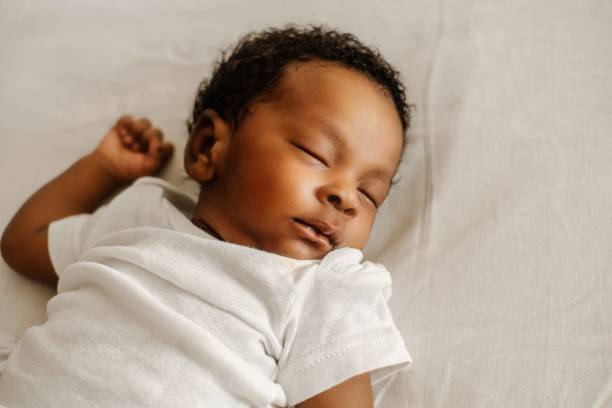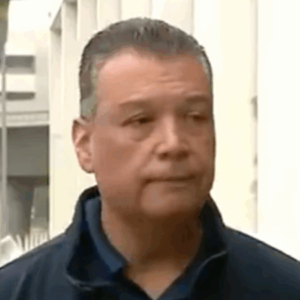Part 1: The Long-Awaited Arrival
After five years of trying, Stephanie and I were finally about to become parents. The pregnancy had been difficult—morning sickness that lasted all day, dizzy spells, and days when she could barely stand without help. But through it all, she never complained. She was determined, focused, and so excited to meet the little life growing inside her.
On that bright spring morning, Stephanie’s hand felt like iron around mine as another contraction hit. Her face, though, was calm and determined—a look I’d come to know well over these long months. The labor room was quiet except for the soft beeping of monitors and the hushed voices of nurses. Our families hovered just outside the door, giving us space but ready to rush in at the first cry.
Dr. Weaver, our obstetrician, offered me a reassuring smile. “You’re doing great, Brent,” I heard her say as I squeezed Stephanie’s hand.
I whispered it back. “You’re doing amazing, babe. We’re almost there.”
Minutes stretched into hours. Stephanie pushed with every ounce of strength she had, and I coached her through each wave of pain. When the doctor announced it was time, I felt my heart hammer in my chest.
Then, at 3:27 pm, our daughter’s first cry filled the air. Relief, joy, and overwhelming love washed over me. Tears streamed down my cheeks as the nurse laid the tiny bundle on Stephanie’s chest.
And then everything changed.
Part 2: The First Glimpse of Fear
Stephanie’s face went pale as she looked down at our newborn. Her eyes widened in shock.
“Bren… t…” she whispered, voice trembling, “I… don’t feel well.”
I froze. At first I thought she was still reeling from the intensity of labor, but the fear in her eyes told me something far worse was wrong. The nurse held our daughter gently on Stephanie’s chest while I jumped up.
“Steph, what is it?” I asked, panic rising.
Stephanie closed her eyes and took a shallow breath. “My chest— it… it hurts. It’s hard to breathe.”
The room snapped to attention. Nurses gathered around us, checking her vitals. Dr. Weaver stepped forward, her calm demeanor replaced by professional concern.
“Stephanie, I need you to breathe slowly for me. Tell me where it hurts.”
She pointed to her right lung area. “It’s deep. Like a sharp… stabbing pain.”
My heart pounded. “Steph, you can’t leave me. You’re okay—you have to be okay. You just had our baby.”
A nurse strapped a blood pressure cuff on her arm. “Her oxygen levels are low,” she reported. “I’m going to get a portable X-ray machine.”
“An X-ray?” Stephanie’s eyes filled with dread. “Is that safe for the baby?”
Dr. Weaver spoke gently. “Our priority is your health right now. The baby is safely here with you, and the radiation exposure from a single portable X-ray is minimal.”
Stephanie nodded, though terror flickered across her face. I took her hand, willing her to stay calm.
Part 3: The Diagnosis That Shattered Us
An hour later, the X-ray images glowed on a small viewing station. Dr. Weaver examined them, lips pressed in a thin line.
“Stephanie,” she said softly, “there’s a mass in your right lung. We need to do further tests—CT scan and a biopsy—as soon as you’re stable.”
A mass. The word echoed in my mind. “Could it be pneumonia? A blood clot?”
Dr. Weaver shook her head. “It’s not typical of pneumonia, and we’d have seen other signs. We need to rule out lung cancer.” The words hung in the air like a guillotine blade.
“Lung cancer?” Stephanie’s voice was barely a whisper. “Me? But… I’ve never smoked. How could this be?”
Dr. Weaver placed a hand on her shoulder. “Lung cancer can occur in non-smokers. We’ll run the tests, and if it is cancer, we’ll customize a treatment plan for you—and involve oncology immediately.”
I felt as though the world slipped out from beneath me. My wife—standing strong through every test, every ultrasound, every moment of morning sickness—now faced lung cancer hours after our daughter was born.
Tears blurred my vision. I squeezed Stephanie’s hand until my knuckles whitened. “Steph, I’m right here. I’m not going anywhere.”
Part 4: A Family Torn Apart by Fear
Word spread quickly through our families. By evening, my parents and Stephanie’s were silently gathered around the hospital room. Our daughter slept peacefully in Stephanie’s arms, but the tension in the room was suffocating.
My mother spoke first, voice trembling. “Brent, you’ve got to think about what’s best for the baby. A mother with lung cancer…”
I cut her off. “Mom, she just had a baby. She’s in pain, terrified, but she needs my support. I’m not abandoning her.”
My father frowned. “I’m not saying abandon her. But… cancer is serious. You need to be realistic.”
Realistic. The word stung. I looked at my daughter, asleep against Stephanie’s chest. Then I looked at Stephanie—her hair damp from sweat, her face pale but determined. How could I choose anything but to stay?
Stephanie’s mother wrapped her arms around her. “Sweetheart, this is going to be a long fight. Are you ready for that?”
Stephanie met my eyes. In them I saw her fierce resolve. She was ready. She had to be ready—for herself and for our daughter.
“I’m ready,” she said firmly. And in that moment, I knew I would stay with her forever.
Part 5: Understanding Lung Cancer
Over the next days, Stephanie underwent a CT scan and a minimally invasive biopsy. The pathology report confirmed the diagnosis: Stage II non–small cell lung cancer. Though frightening, it wasn’t the most advanced stage, and that meant our chances of a positive outcome were higher—if we acted quickly.
Dr. Patel, her oncologist, explained: “Lung cancer is the leading cause of cancer death worldwide. In non–smokers, it’s often driven by genetic mutations. We’ll test your tumor for specific markers to see if targeted therapies are an option.”
Targeted therapies. Chemotherapy. Radiation. Lobectomy. So many medical terms clattered through my head like broken machinery. But Dr. Patel’s calm, methodical explanations gave us hope.
“If we catch lung cancer early, the five-year survival rates improve dramatically,” she said. “With Stage II, your survival rate is around 50–60 percent with appropriate treatment.”
Stephanie nodded, swallowing hard. “What do I need to do?”
Dr. Patel outlined a treatment plan:
-
Surgical Resection: A VATS (video-assisted thoracoscopic surgery) to remove the tumor and a small margin of lung tissue.
-
Adjuvant Chemotherapy: A series of chemo cycles to eliminate any microscopic cancer cells.
-
Radiation Therapy: Focused radiation to the tumor site to reduce recurrence risk.
-
Genetic Testing: To determine if immunotherapy or targeted drugs are viable.
-
Pulmonary Rehabilitation: Breathing exercises and physical therapy to restore lung function.
It was daunting. But it was a path forward. One I would walk alongside her, every step of the way.
Part 6: The Hospital Stay and Early Treatment
Stephanie’s surgery was scheduled just two weeks after the diagnosis—tightly compressed after childbirth, but Dr. Patel insisted on swift action. I stayed by her side the entire time, sleeping in the recliner overnight, holding her hand and brushing her hair back when she woke groggy from anesthesia.
The VATS procedure went smoothly. The thoracic surgeon removed her right upper lobe, along with adjacent lymph nodes, to determine if the lung cancer had spread. I breathed a prayer of relief when Dr. Harrison gave me the all-clear.
“It looks contained,” he said. “Margins are clear, and lymph nodes are negative. This surgery, combined with follow-up chemo and radiation, gives you the best chance at beating this lung cancer.”
I let out a breath I didn’t realize I’d been holding. “Thank you, Doctor. How is she?”
He smiled gently. “She did wonderfully. We’ll monitor her recovery closely, but she’s strong.”
Stephanie awoke a few hours later, painkillers drifting in her system. I kissed her forehead. “Hey, warrior. You did it.”
She managed a weak smile. “I couldn’t have done it without you.”
Those words made my chest tighten. From that moment on, I vowed to be her unwavering support—through each chemo infusion, each radiation session, and every anxious scan.
Part 7: Chemotherapy, Radiation, and the Struggle Ahead
Chemotherapy began a month later. The first session was brutal. As the nurse inserted the IV and the drugs began to flow, Stephanie clenched my hand so tightly her nails dug into my palm.
“I’ll be okay,” she whispered. But her face was pale, and I could see the fear beneath her brave facade.
Afterwards, nausea wracked her body. Hair started to thin and fall out in clumps. She often collapsed onto the couch at home, too weak to move. I hired a night nurse to assist with baby feedings when she couldn’t get out of bed. Our home became a whirlwind of hospital visits, feeding schedules, and fatigue.
Radiation therapy followed chemotherapy—daily sessions for six weeks. Each time she lay on the machine, I’d hold her hand as the technicians positioned her. The relentless buzz of the machine and the scent of antiseptic became our constant companions.
But with every treatment completed, we marked a small victory. One less round of chemo. One final radiation session. Each milestone, each clear scan, was a moment of joy in the sea of hardship.
Part 8: The Emotional and Financial Toll of Lung Cancer
Lung cancer didn’t just attack Stephanie’s body; it threatened every aspect of our lives. Bills piled up—medical costs, prescription copays, hospital stays. My workload at the office increased, forcing me to juggle night shifts and early mornings.
But the hardest battle was emotional. There were days when Stephanie retreated inward, overwhelmed by sadness. She wondered if she’d live to see our daughter’s first birthday, first steps, first day at school. Guilt washed over her: Why was she passing this pain onto our daughter and me?
I learned the importance of listening—to her fears, her anger, her grief. I reminded her constantly: “You’re going to be here. We’ll beat this lung cancer. We’ll raise our daughter together. I won’t let you face this alone.”
Friends rallied around us, bringing meals, offering babysitting, sending encouraging messages. Oncology social workers connected us with support groups for lung cancer patients and their families. Slowly, the isolation lifted, replaced by a sense of community.
Part 9: Rediscovering Hope—A Clean Scan
One year after her surgery and intensive treatment, Stephanie underwent a comprehensive PET-CT scan. The results came back free of any active cancer—no sign of residual or recurrent lung cancer. The words “no evidence of disease” shone on the report like a beacon.
When Dr. Patel delivered the news, tears streamed down her cheeks. And I wept with her.
“You did it,” she said, voice thick with emotion. “You really did it.”
Stephanie managed a weak laugh. “We did it—doctor, me, and my husband here who never left my side.”
I squeezed her hand. “We did it together.”
That moment of triumph was tempered by the knowledge that lung cancer can recur. We would remain vigilant—regular scans, checkups, a lifetime of monitoring. But for the first time in over a year, we could breathe easy.
Part 10: Life After Lung Cancer—Cherishing Every Breath
Today, two years after that terrifying diagnosis, Stephanie thrives. Her hair has grown back, thicker and curlier than before. She’s returned to work part-time, balancing her career with motherhood. Our daughter, now toddling around the house, calls her “Mama” and giggles when Stephanie chases her around the living room.
But we’ll never forget the lung cancer that upended our lives. Our family now champions lung cancer awareness:
-
Annual Fundraisers: We host a community 5K walk to raise money for lung cancer research and patient support.
-
Advocacy and Policy: We’ve met with state representatives to push for better funding of early screening programs for lung cancer in non-smokers.
-
Educational Outreach: Stephanie speaks at local hospitals and schools, sharing her story and encouraging people to listen to their bodies—any persistent cough, chest pain, or unexplained breathlessness could be the first sign of lung cancer.
-
Support Groups: We volunteer with lung cancer survivor groups, offering a shoulder to cry on or an ear to listen to those newly diagnosed.
We’ve learned that lung cancer is not just a smoker’s disease. It can strike anyone, at any age, even someone like Stephanie—never having touched a cigarette in her life. Early detection, aggressive treatment, and unwavering support are our greatest weapons.
Part 11: A Vow Renewed
As our daughter tumbles into her fourth birthday, we celebrate with a beachside picnic. Stephanie runs after her daughter, golden sunlight highlighting her face, and I feel an immense gratitude swelling in my chest. Lung cancer tried to steal our joy, but instead, it taught us how precious every moment truly is.
That afternoon, as we walk along the shore, I take Stephanie’s hand and kneel in the sand. She looks at me, curious.
“Steph,” I say, voice steady, “you faced lung cancer and won. You showed more courage than anyone I know. Will you renew your vows with me? Let’s celebrate life and love—no more fear, only hope.”
Tears glisten in her eyes as she nods. “Yes. Yes, I will.”
We stand and embrace, the waves crashing around us like applause. In that moment, lung cancer feels like a distant memory—a reminder of the darkness we survived, but not a shadow over our future.
Epilogue: Living Beyond Lung Cancer
Lung cancer remains one of the deadliest cancers worldwide, claiming millions of lives each year. But stories like ours—of early detection, aggressive treatment, and unwavering support—shine as beacons of hope. Lung cancer taught us to appreciate the ordinary: morning coffees, school drop-offs, quiet evenings by the fire. It taught us the power of community and the unbreakable bond of family.
Most importantly, it taught me that love—true, steadfast love—can withstand even the gravest of diagnoses. When I discovered Stephanie had lung cancer, I had a choice: walk away or stay and fight by her side. I chose to stay. Because lung cancer may have threatened her life, but it only strengthened our love—anchoring us forever in the truth that together, we can overcome anything.
And that’s why, years from now, when our daughter looks back on her childhood, she’ll know her parents once faced lung cancer—and won. Because sometimes the greatest stories of survival are written not in medical journals, but in the hearts of those who refuse to give up on each other—no matter how dark the diagnosis.






